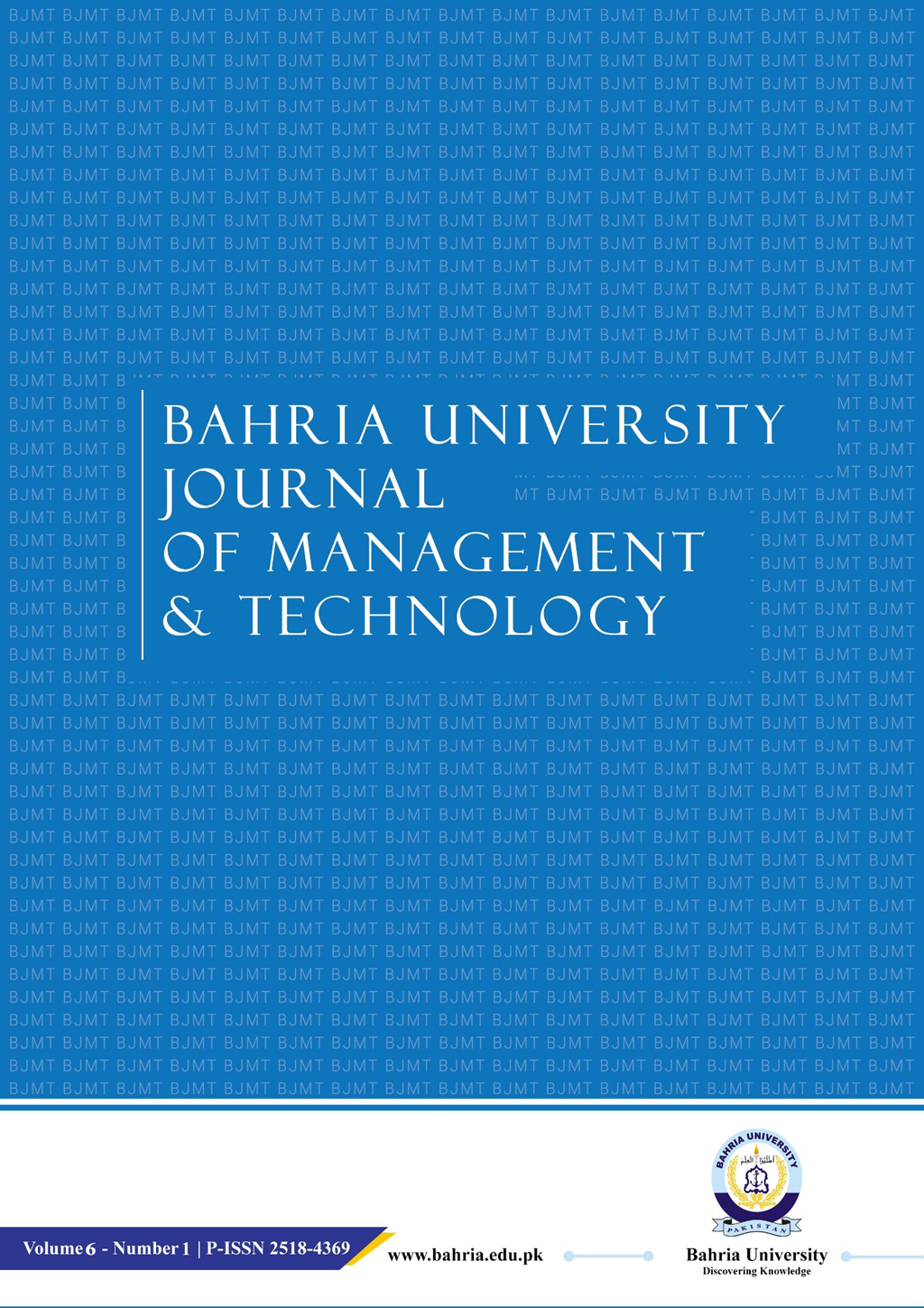Nexus between Islamic Banking Profit Rate and Conventional Banking Interest Rate.
Evidence from Pakistan's Dual Banking System
DOI:
https://doi.org/10.62533/bjmt.v6i1.55Keywords:
Nexus, Conventional Banks Interest Rate, Islamic Bank's Profit Rate, SBP Policy Discount Rate, Cointegration, Pakistan Dual BankingAbstract
Purpose
The fast pace of Islamic banking growth has also attracted a few controversies. Critiques of Islamic Banking argue that the Islamic Banks are replicating and getting influenced by conventional interest rate banking. The very purpose of this paper is to investigate the nexus between the Profit rate of Islamic Banks and the interest rate of conventional banks on Deposits and lending in Pakistan. It also investigates the impact of State Bank's Policy rate on Islamic Banking Profit rate and Conventional Banking Interest rate.
Design/methodology/approach
To investigate the nexus between Islamic and conventional banking rates of return and the impact of State Bank's Policy rate on both the said rates, this study has applied regression, Johansen Cointegration, autoregressive distributed lag (ARDL), Vector Error Correction Model (VECM), and Granger Causality econometric techniques. The study covers bi-annual time series weighted average data for 15 years from 2003 to 2018.
Findings
The findings of regression, Johansen Cointegration, ARDL, and VECM Models confirmed the existence of cointegration between the profit rate of Islamic Banks and interest rates of conventional banks. Granger causality test traced the causality between the two rates of return running from Islamic to conventional banking rates thus confirming that Islamic banks are not pegging their rates in response to change in interest rates. State Bank's Policy rate found granger cause for Conventional bank's rate of return but not for Islamic Banking Profit rates.
Research Limitations/Implications
The study uses bi-annual weighted data for the study variable as the monthly data for Islamic Banking profit rate on deposits and loan is not available. Researchers are encouraged to use monthly data subject to availability of the same in the future as this may add more sophisticated and robust results to confirm the causality between the two rates of returns.
Practical Implication
The research findings have policy implications for Banking product pricing, monetary policy, and financial stability in Pakistan. In light of the findings of the study, Islamic Banks can develop an alternate independent benchmark rate to disengage its pricing mechanism with interest rate. Policymakers can develop separate monetary policy rates to regulate the Islamic Banking rates of return. The study has also practical implications insight for policymakers and regulators who want to influence both the banking rates in a dual system through one policy rate.
Social Implication
This study rejected the critic's belief that Islamic Banking is getting influenced by Conventional Banking Interest rates. The study reveals that though both rates are linked to each other it is the conventional banks, which, to remain competitive, are getting influenced and pegging their rates as per movement in Islamic Banking profits rates. So, Islamic banking is making its way towards an independently structured alternate banking system.
Originality/Value
This is one of the first studies conducted in Pakistan to investigate the causal link between Islamic Banking Profit rate and Conventional Banking interest rate in the dual banking system. The study advanced the finding of previous studies to loan side nexus of rates of return between Islamic & conventional banking. The impact of SBP monetary policy is also documented for the first time in Pakistan as a comparative analysis on Islamic & conventional Bank's rates of return.


